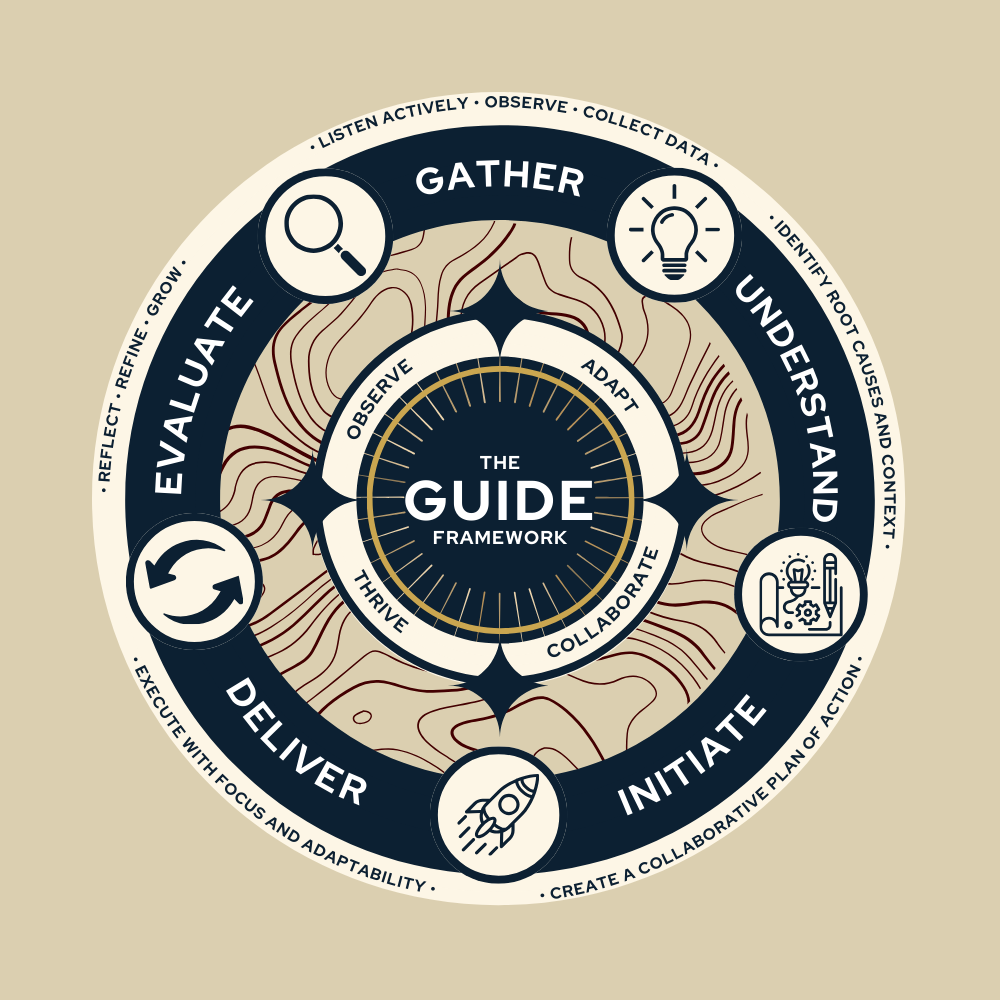Crisis Leadership: You Don’t Rise to the Occasion, You Fall to Your Training
When things go sideways, leadership isn’t about last-minute heroics or a perfectly delivered speech.
It’s about what you’ve already built—day after day—in yourself and your team before the crisis ever shows up.
Because when the pressure’s on, you don’t suddenly become someone new. You default to your habits, your systems, and your culture. That’s why elite performers look calm under fire—it’s not luck, and it’s not magic. It’s the byproduct of preparation and practice.
Crisis Reveals Culture
When the heat turns up, people aren’t looking at your title. They’re looking at you.
Your tone. Your presence. Your ability to think clearly when everyone else feels the squeeze.
Crisis doesn’t create leaders, it exposes them. It shows whether you’ve been quietly building trust, modeling clear communication, and holding the line on standards when the room was calm.
One example has stuck with me for years. At Marine Corps Embassy Security Guard School, we were told to arrive wearing our Service “A” uniform. Not carrying it, wearing it. Two Marines showed up with theirs neatly pressed in garment bags. They were sent home before training even began.
It might sound harsh. But it wasn’t about the uniform, it was about the standard. In that environment, expectations were clear, and accountability was non-negotiable. By the time those Marines reached their duty stations, nobody wanted to be the one who let the team down.
Takeaway: Culture is the armor you wear into the fire. You’re building it every day, whether you mean to or not.
Why “We’ll Figure It Out” Fails
There’s a biological reason winging it doesn’t work in a crisis.
When your brain perceives danger, your higher-level reasoning drops. Fine motor skills get sloppy. Your vision narrows. You default to instinct, and if that instinct hasn’t been trained, you may not like what comes out.
I’ve been on both sides of this.
The first time a gun was pulled on me, I flinched and blurted something completely useless. That was raw, untrained instinct.
Years later, after thousands of repetitions with a sidearm, I found myself unarmed during an armed robbery. My hand moved to draw a weapon that wasn’t there, not because I was fearless, but because my training had burned that motion into my muscle memory.
That moment reminded me: you don’t train to be fearless, you train to be functional when fear shows up.
Takeaway: You don’t rise to the occasion, you fall to the level of your preparation.
Rehearse When Others Relax
A plan on paper is not the same as readiness. The best teams don’t just write plans, they own them.
They walk the routes.
They run the drills.
They throw in curveballs to see how people adapt.
Wake a great team at 2:00 a.m. with an alarm, and within seconds they’re geared up, communicating clearly, and thinking three moves ahead. That’s not luck, it’s the result of countless reps.
In a crisis, you don’t need to brainstorm, you need reliable, repeatable actions you’ve already tested.
Leader’s checkpoint:
When was the last time you practiced under pressure, not just talked about it?
Do your people know the first three actions if the plan fails?
Have you deliberately stress-tested your system to see what breaks?
The Decision Window
Crisis punishes hesitation, but it also punishes recklessness.
The best leaders don’t freeze, and they don’t rush. They create a quick, intentional pause, long enough to gather what matters, trust their reps, align the team, and move decisively.
Move too fast, and you risk making the wrong call. Move too slow, and the window for action closes. Finding that sweet spot isn’t about talent, it’s about training.
Practical cue: In the moment, take one breath. Ask, What’s true? What matters? What moves first? Confirm the first actions, then go.
The GUIDE Framework
When plans break, and they will, you need a rhythm that keeps people thinking clearly and moving together. That’s where the GUIDE Framework comes in.
Gather – Listen first. Focus only on the information that matters.
Understand – Identify the root cause and the likely ripple effects.
Initiate – Build the plan, assign roles, confirm communication channels.
Deliver – Execute with focus, but stay flexible.
Evaluate – Capture the lessons, fix the systems, and push the updates into training while the experience is fresh.
The GUIDE framework isn’t a checklist, it’s a shared language. And when stress is high, shared language is what keeps teams from unraveling.
Five Ways to Build Your Armor Before the Fire
Crisis leadership starts long before the crisis. If you want your team to perform on demand, you have to build the culture and the reps now.
1) Codify standards, and live them.
High standards aren’t just words on a wall. They’re enforced behaviors, visible every day. Decide what’s non-negotiable, put it in plain language, and model it yourself.
2) Normalize rehearsal.
Drills shouldn’t be rare events, they should be a habit. Keep them short and realistic, mix up scenarios, and reward adaptability, not perfection.
3) Create decision guardrails.
Define what gets acted on immediately, what requires a pause, and what needs escalation. This clarity speeds up execution and prevents costly mistakes.
4) Train communication under pressure.
Brevity and clarity beat long explanations when the clock is ticking. Use standard formats for updates and confirm instructions are understood.
5) Make debriefs a ritual.
If you don’t capture the lesson, you’ll repeat the mistake. Debrief quickly, record what’s learned, and push those lessons into training right away.
Common Pitfalls That Derail Crisis Performance
Hoping the problem will solve itself.
Leaders hoarding every decision, slowing the team down.
Training that’s more theatrical than practical.
Culture that’s all slogans and no enforcement.
Moving too fast, or not moving at all, because there’s no intentional pause.
A Quick Field Guide for Crisis Moments
When the unexpected hits, here’s a simple cadence to get your team moving:
Stop and breathe. Interrupt panic before it takes over.
State what’s true. Focus on facts, not noise.
Set the aim. One sentence, what’s the immediate goal?
Assign first actions. Who’s doing what in the next two minutes?
Confirm comms. How will updates be shared, and with whom?
Move. Execute and adapt as needed.
Debrief quickly. Capture one thing to improve and one thing to repeat.
The Bottom Line
Crisis leadership doesn’t start with alarms, it starts in the quiet moments when you choose preparation over comfort.
When the pressure comes, you won’t magically rise to the occasion. You’ll fall to the level of your training, your habits, and your culture.
So build them now.
If you want a simple first step for everyday leadership moments, grab my free resource, 10 Things to NEVER Say as a Leader. It’ll help you tighten the language that builds, or erodes, trust.
And if you, or someone you mentor, is stepping into a new leadership role, The First 30 Days course was built to help leaders earn respect and set the tone from day one, without overcompensating or guessing in the moments that matter.
Preparation beats hope, every time.
Bottom line: Crisis doesn’t build your leadership, it reveals it. Culture is your armor, practice is your edge, and presence is your amplifier. Train now, so when the fire starts, you’re already the leader your team expects to see.


